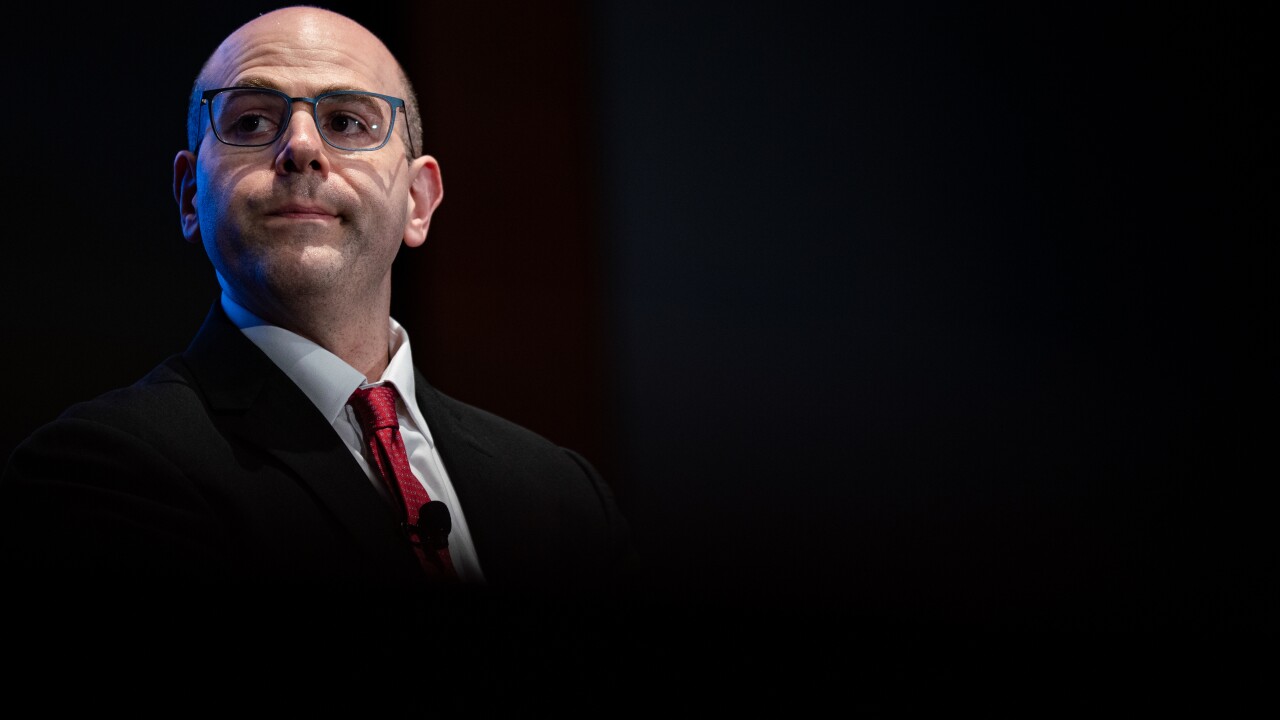(Bloomberg) -- The Federal Reserve needs to be on guard against cutting interest rates too far in response to falling inflation lest it undermine the achievement of its ultimate goal of price stability, Vice Chair Philip Jefferson said on Thursday.
"We always need to keep in mind the danger of easing too much in response to improvements in the inflation picture," he said in a speech prepared for delivery to the Peterson Institute for International Economics. "Excessive easing can lead to a stalling or reversal in progress in restoring price stability."
Jefferson, who as vice chair is a key messenger for Chair Jerome Powell, voiced cautious optimism that inflation is headed lower despite a blip in January and said the Fed is likely to begin cutting interest rates later this year. The remarks echoed recent comments from other Fed officials suggesting the US central bank is in no rush to lower borrowing costs.
Philadelphia Fed President Patrick Harker said at a separate event Thursday that cutting rates too soon could unwind progress made on inflation, and he wants to see more evidence that price pressures are broadly easing.
"I believe that we may be in the position to see the rate decrease this year," Harker, who doesn't vote on policy decisions, said at an event in Newark, Delaware. "But I would caution anyone from looking for it right now and right away. We have time to get this right, as we must."
Key Risks
Jefferson said Thursday he saw three key risks to the outlook. Consumer spending could prove more resilient than he expects, stalling progress on inflation. Oil and other commodity markets could be roiled by a widening of the conflict in the Middle East. Employment could weaken as growth fades.
"The labor market can change dramatically," he said in a question-and-answer session following his speech. "We have to be careful and we have to try to assess the different shocks that can hit the economy and adjust policy accordingly."
Asked if it would take a "growth scare" for the Fed to begin cutting rates, Jefferson said he looks at the "totality of the data in the economy" in judging the stance of policy.
"I'm going to be looking at labor markets, growth, productivity, on the real side, and then inflation on the price side," he said. "So I don't think it's necessarily one thing that we would have to see before we think about cutting."
He said the Fed should try to avoid yanking policy in one direction — toward easing, for example — then another, toward tightening, which could create uncertainty that would make it harder for households and businesses to make economic decisions.
In his speech, Jefferson reviewed past monetary policy easing cycles. The main lesson he drew was that the Fed needed to be nimble in carrying out policy.
In discussing what former Fed Vice Chair Alan Blinder has called the "perfect soft landing" of the economy in the mid 1990s, Jefferson noted that the Federal Open Market Committee started to cut rates as inflation worries lessened, then left them unchanged for three meetings before resuming cuts.
"Careful easing in the July 1995 easing cycle allowed the FOMC to assess incoming data and other information to make sure that inflation was under control," he said.
Cautious Approach
Fed officials generally agree that interest rates likely are at a peak, but they don't seem to be in a rush to reduce them, minutes of their last meeting in January showed. Powell told reporters following that meeting that a rate cut at the central bank's gathering next month was unlikely.
The cautious approach by policymakers was largely validated by data released since then. The consumer price index rose by more than forecast in January across the board, and prices paid to US producers also climbed. As a result, economists forecast the Fed's preferred gauge of underlying inflation to rise at the fastest pace since early 2023 when it's released next week.
The jobs market, meanwhile, has remained robust, with employers boosting payrolls in January by the most in a year while unemployment hovers around multi-decade lows, at 3.7%.
Markets have significantly dialed back expectations for early and rapid rate cuts as a result, with traders in the federal funds futures market now betting the Fed will first lower rates in June. Investors also expect three to four cuts in 2024, a pace more in line with policymakers' median projection in December.
Fed officials will update their projections for rates and the economy at their March 19-20 meeting. Ahead of that gathering, Powell will have an opportunity to offer fresh thoughts on the outlook when he testifies before Congress in early March.
--With assistance from Catarina Saraiva.
(Adds Harker comments in fourth paragraph.)
More stories like this are available on
bloomberg.com






